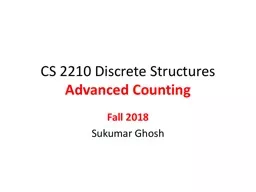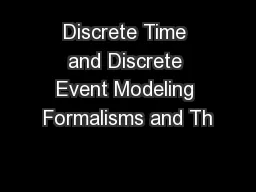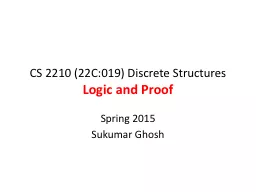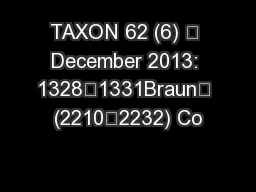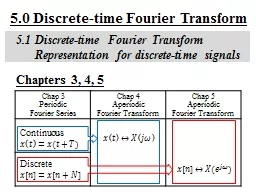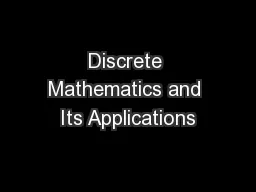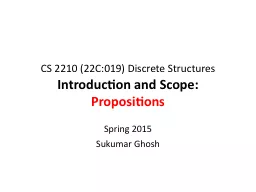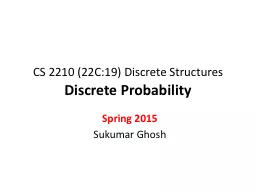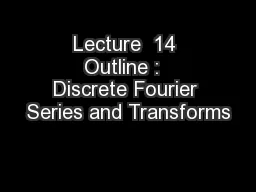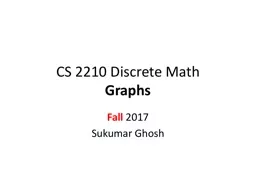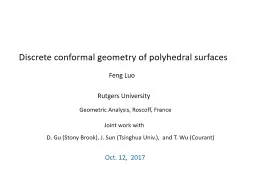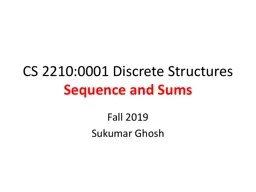PPT-CS 2210 Discrete Structures
Author : faustina-dinatale | Published Date : 2019-03-16
Advanced Counting Fall 2018 Sukumar Ghosh Compound Interest A person deposits 10000 in a savings account that yields 10 interest annually How much will be there
Presentation Embed Code
Download Presentation
Download Presentation The PPT/PDF document "CS 2210 Discrete Structures" is the property of its rightful owner. Permission is granted to download and print the materials on this website for personal, non-commercial use only, and to display it on your personal computer provided you do not modify the materials and that you retain all copyright notices contained in the materials. By downloading content from our website, you accept the terms of this agreement.
CS 2210 Discrete Structures: Transcript
Download Rules Of Document
"CS 2210 Discrete Structures"The content belongs to its owner. You may download and print it for personal use, without modification, and keep all copyright notices. By downloading, you agree to these terms.
Related Documents

